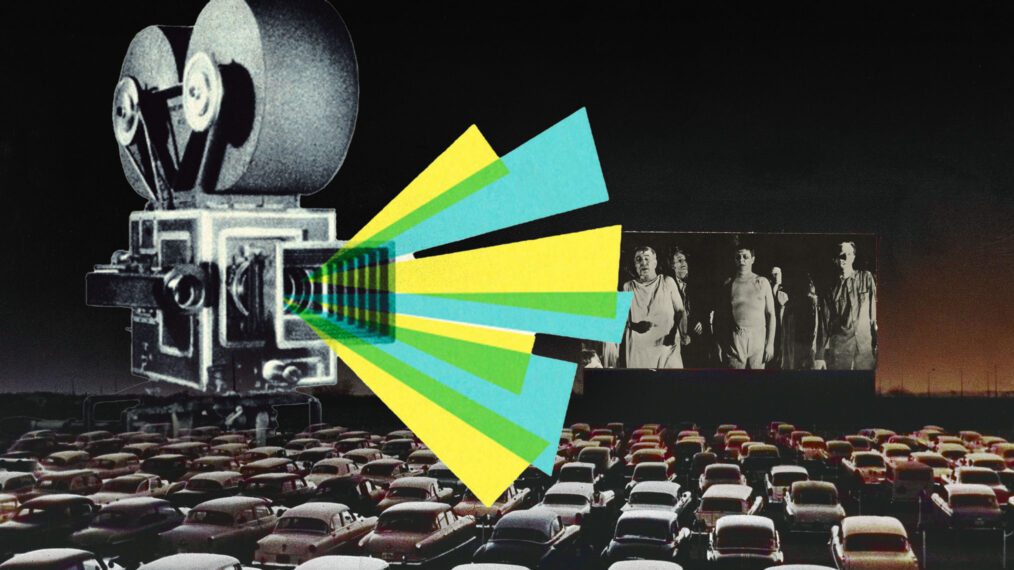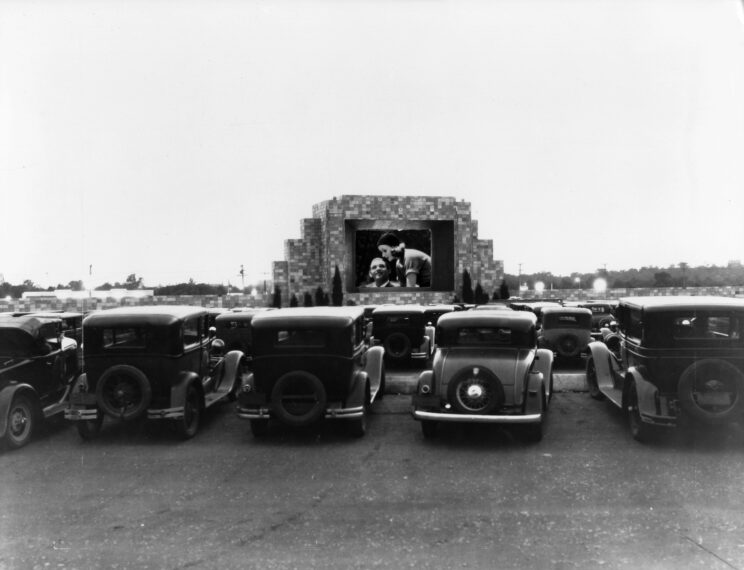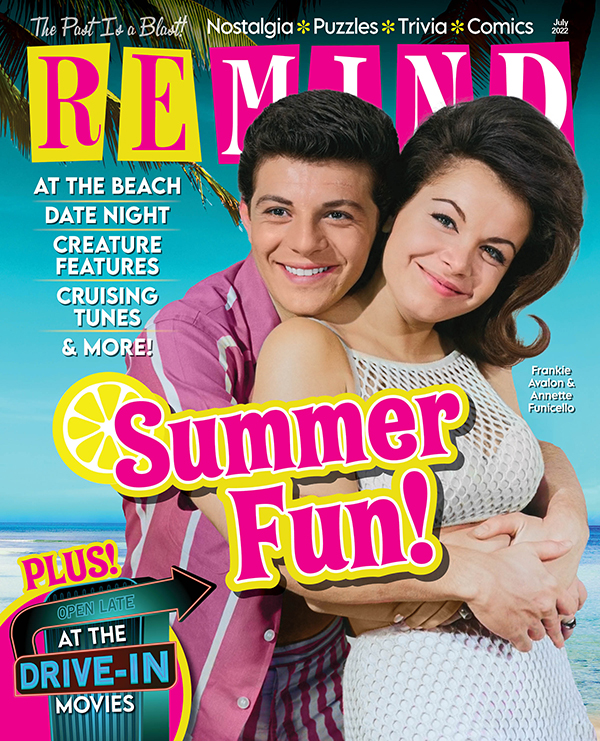Hollywood On Wheels: Drive-In Theaters Were Magic in Motion

Nowadays you don’t see many drive-in theaters in operation, but back in the day they were the ideal movie experience for a mobile America, catering especially to families with young children otherwise unwelcome in theaters, and couples looking for a more discreet place to act out big-screen passions with each other.
The first drive-in theater was patented by chemical plant magnate Richard M. Hollingshead Jr. In 1932, Hollingshead began testing his idea for outdoor theater in his own Camden, N.J. backyard, setting a movie projector on the hood of his car and a speaker behind a screen that was nailed to a tree. In 1933 he applied for and received the patent, and in the same year, he opened his drive-in theater, a 400-space lot with a 40’-wide screen. The first movie to play there was Wife Beware starring Adolphe Menjou.

First drive-in theater in Camden, New Jersey, 1933
There were challenges, though. At Hollingshead’s theater, the speakers were mounted on a tower; audio from the movie was on a sound delay the further back patrons were parked.
In three years the Camden drive-in closed, but other drive-ins began to open in rural areas around the country. In 1941, in-car speakers were introduced, solving the audio problem. By the early ’50s, about 20 percent of movie revenues were coming from drive-ins, even though the venue was limited by time (movies could only be shown after twilight) and season.

Natalie Wood displays the new drive in-movie speakers in Hollywood, California, 1957.
At their peak in the ’50s and ’60s, drive-ins offered a host of amenities to patrons, including playgrounds for the kids, petting zoos, dollar-night specials, in-car concession service and appearances by stars at openings or musical concerts. But who could forget the fun concession stand promos that played in-between films?
In the ’70s, drive-ins began to decline. They took up a lot of real estate and used the space inefficiently, remaining closed for the winter and only open at night. The widespread adoption of daylight saving time meant there was an hour less for evening viewing. Color TVs and then video kept audiences home. The fare became seedier, with R- and X-rated films catering to the passion-pit audience. High-tech advances like Dolby, digital and 3-D couldn’t be offered by drive-ins. Last year, less than 2 percent of the country’s active theaters were drive-ins.
As drive-ins closed, the spaces were often converted for shopping centers, industrial parks or flea markets. Relics can be seen across the land. A freak derecho storm with 150-mph winds destroyed most of the Ecorse Drive-In in Taylor, Mich., leaving only the sign in front with the letters, “Now playing, Gone With the Wind.”
In the past few years there has been some resurgence of drive-ins that cater to the nostalgia market, as well as “guerrilla” drive-ins, where individuals or groups orchestrate outdoor screenings to flash mobs projecting cult films onto bridge pillars or warehouse walls.

Summer Fun
July 2022
Take a look back to the summer nights when you were young, so full of adventure and possibility.
Buy This Issue